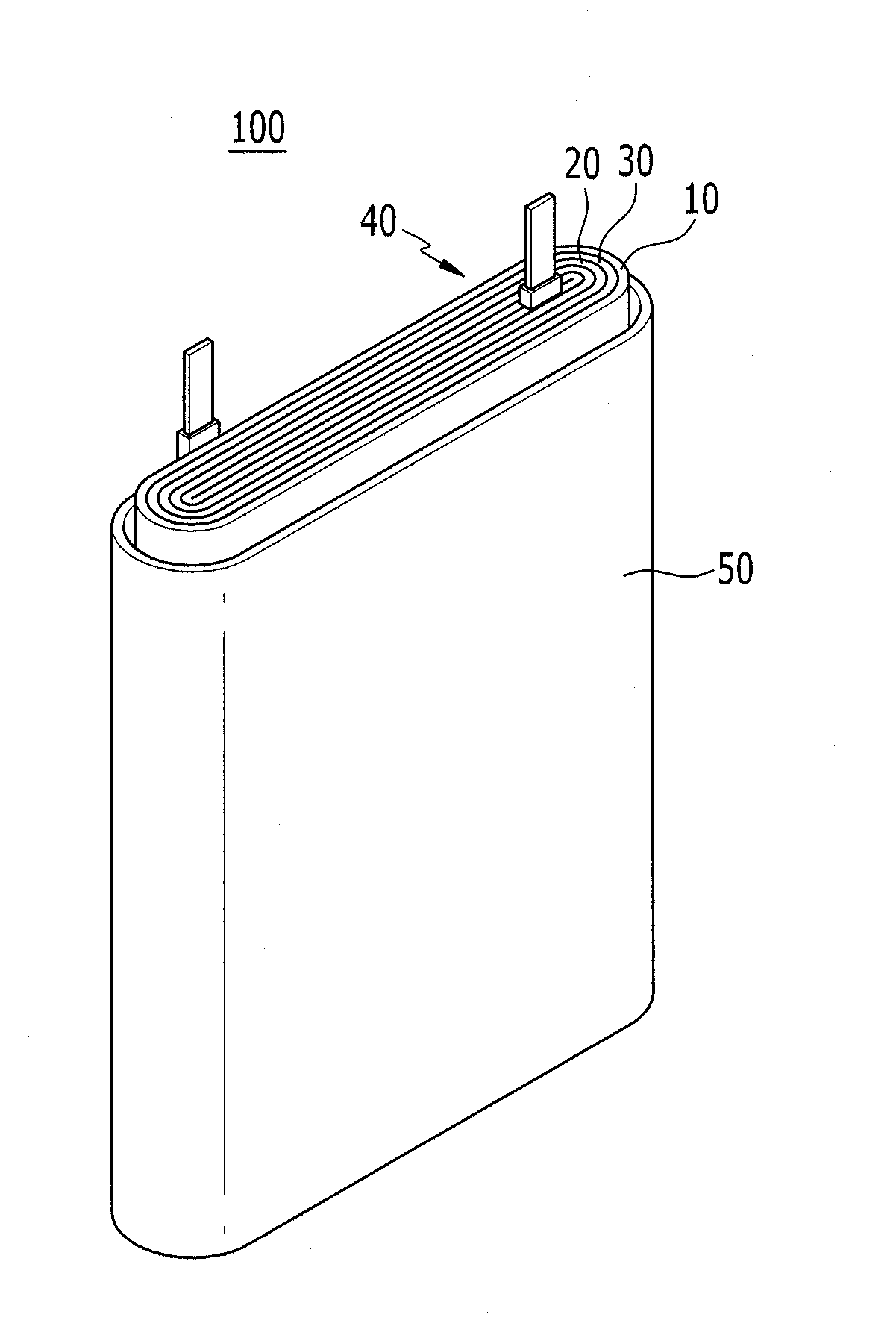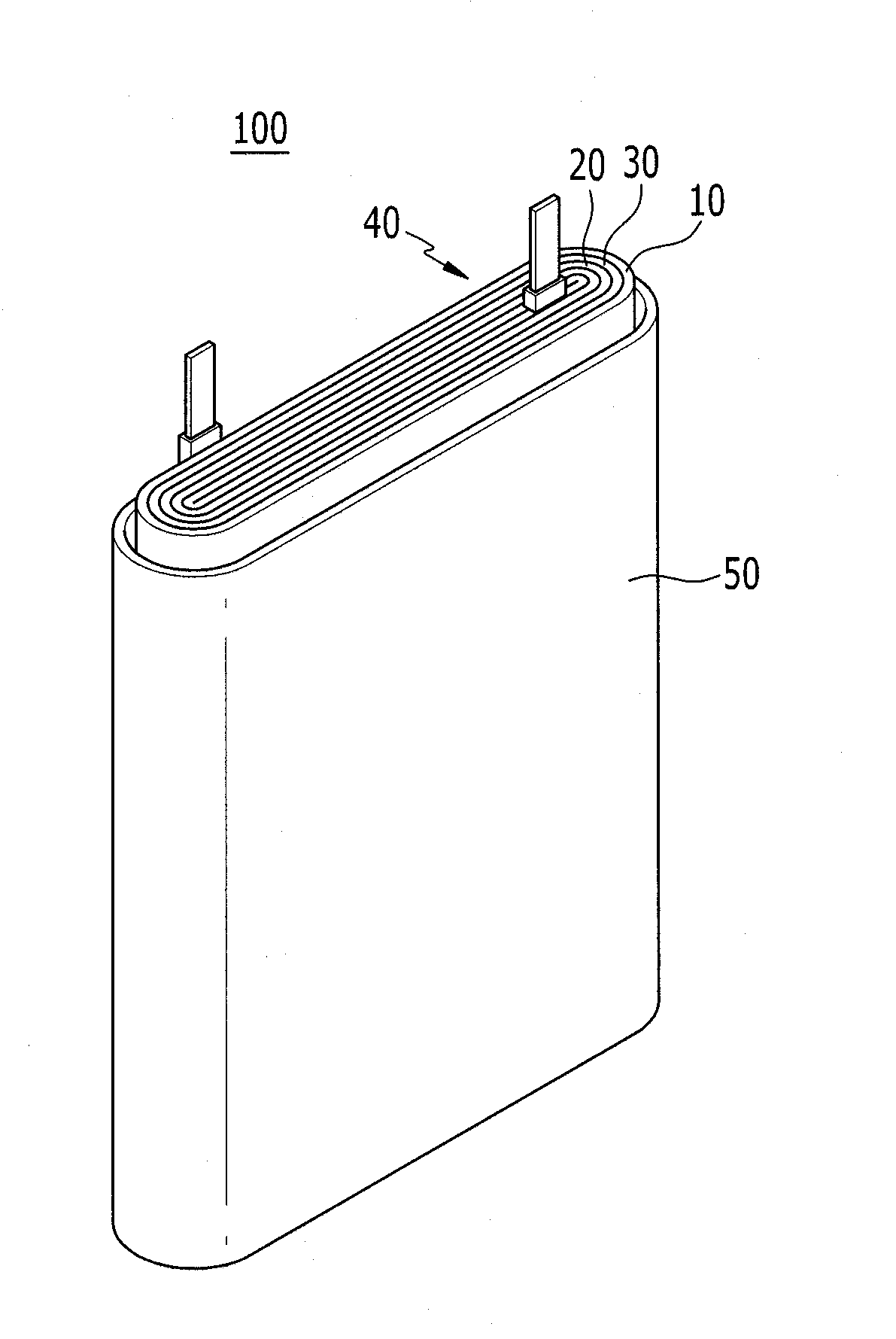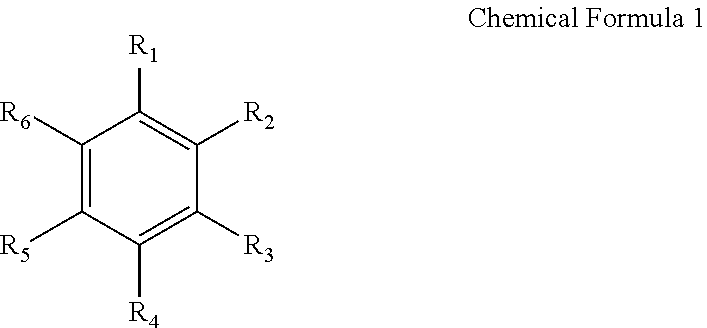Rechargeable lithium battery with controlled particle size ratio of activated carbon to positive active material
a lithium battery, positive active material technology, applied in batteries, cell components, electrochemical generators, etc., can solve problems such as unsatisfactory approach, and achieve the effect of improving high-rate charge and discharge characteristics and cycle-life characteristics
- Summary
- Abstract
- Description
- Claims
- Application Information
AI Technical Summary
Benefits of technology
Problems solved by technology
Method used
Image
Examples
example 1
[0086]Positive active material slurry was prepared by mixing 85 wt % of LiCoO2 having an average particle diameter of 6.6 μm, 5 wt % of activated carbon having an average particle diameter (D50) of 6.8 μm (pitch-based, Kuraray Co., Ltd.), 4 wt % of an acetylene black conductive material (Electrochemical Corporation), and 6 wt % of a polyvinylidene fluoride binder in an N-methyl pyrrolidone solvent.
[0087]The positive active material slurry was coated on a 15 μm-thick Al foil, dried at 100° C., and pressed, manufacturing a positive electrode having an active material layer (a positive active material layer) with a mass density of 2.6 g / cc.
[0088]Negative active material slurry was prepared by mixing 85 wt % of amorphous soft carbon (Hitachi Ltd.) having an average particle diameter of 10 μm and an interlayer spacing (d002) of a (002) plane of 0.42 nm as a negative active material, 5 wt % of acetylene black (Electrochemical Corporation), and 10 wt % of a polyvinylidene fluoride binder i...
example 2
[0092]A rechargeable lithium battery cell was manufactured according to the same method as Example 1 except for preparing the positive active material slurry by mixing 85 wt % of LiCoO2 having an average particle diameter of 6.4 μm, 5 wt % of activated carbon having an average particle diameter (D50) of 6.65 μm (pitch-based Kuraray Co. Ltd.), 4 wt % of an acetylene black (Electrochemical Corporation) conductive material, and 6 wt % of a polyvinylidene fluoride binder in an N-methyl pyrrolidone solvent.
example 3
[0093]A rechargeable lithium battery cell was manufactured according to the same method as Example 1 except for preparing the positive active material slurry by mixing 85 wt % of LiCoO2 having an average particle diameter of 6.6 μm, 5 wt % of activated carbon having an average particle diameter (D50) of 8.08 μm (pitch-based, Kuraray Co., Ltd.), 4 wt % of an acetylene black (Electrochemical Corporation) conductive material, and 6 wt % of a polyvinylidene fluoride binder in an N-methyl pyrrolidone solvent.
PUM
| Property | Measurement | Unit |
|---|---|---|
| particle diameter | aaaaa | aaaaa |
| particle diameter | aaaaa | aaaaa |
| particle diameter | aaaaa | aaaaa |
Abstract
Description
Claims
Application Information
 Login to View More
Login to View More - R&D
- Intellectual Property
- Life Sciences
- Materials
- Tech Scout
- Unparalleled Data Quality
- Higher Quality Content
- 60% Fewer Hallucinations
Browse by: Latest US Patents, China's latest patents, Technical Efficacy Thesaurus, Application Domain, Technology Topic, Popular Technical Reports.
© 2025 PatSnap. All rights reserved.Legal|Privacy policy|Modern Slavery Act Transparency Statement|Sitemap|About US| Contact US: help@patsnap.com



